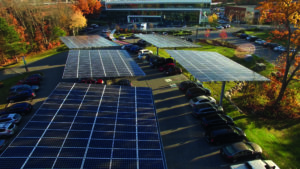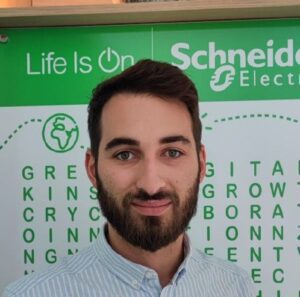
Microgrids are becoming essential infrastructure for reliable, resilient, sustainable, and cost-effective energy. There are many steps to developing, optimizing, and operating these complex systems, all of which require specialized expertise. Outstanding microgrid integrators provide all these capabilities, directly or through partnerships, enabling a growing number of enterprises to adopt the technology and enjoy its benefits.
These systems have evolved from unique proofs of concept to commercially viable platforms in production at organizations of all sizes. Therefore, demand for microgrids has increased with proven case studies and real-life implementations. Now, microgrid integrators are considering ways to better finance, deploy, operate, and maintain microgrids at scale.
Microgrid integrators are driving the technology’s rapid adoption and advancement. They bring together the elements of a microgrid and the services needed to realize and run it. For example, design, development, site selection, permitting, installation, maintenance, and optimized operation. The most effective integrators have strong technology portfolios, deep implementation experience, and partnerships with other integrators and vendors to meet clients’ needs throughout the microgrid lifecycle.
Partnerships gain importance
Strategic partnerships are increasingly important for microgrid integrators, especially as the available technologies and types of microgrids quickly grow. Microgrids are an aggregation of multiple distributed energy resources (DERs). These can be solar photovoltaic (PV) systems, battery energy storage systems (BESSs), and EV charging stations. To provide ideal DERs for each deployment, integrators need to partner with a wide range of suppliers. They may also form partnerships with other providers for microgrid operations and management.

Partnerships among specialized integrators are essential to many microgrid projects. The integrator building the overall framework of a microgrid may bring on another to make the project fit within the client’s business model. Most importantly, energy as a service (EaaS) integrators are making microgrids financially practical for a growing number of enterprises. These specialist integrators assume financial responsibility for every stage of a microgrid’s lifecycle. Clients avoid capital investment, maintenance, and upgrade costs while reducing their financial risk. Instead, the client pays for the energy generated by the microgrid, stabilizing long-term energy costs. This is an especially important benefit during inflationary periods. EaaS integrators can orchestrate business and operational models for diverse organizations, making microgrids more widely available.
What makes an effective microgrid integrator
Partnering is just one of the strengths of a leading microgrid integrator. Enterprises seeking an integrator should also look for a core set of capabilities required to meet clients’ needs and remain relevant in a constantly evolving industry. For example, consider the following points.
- Vision: A strategic plan for innovation that keeps the integrator at the cutting edge, anticipating clients’ evolving requirements and developing solutions ahead of needs.
- Go-to-market strategy: A consistent game plan for educating enterprises about the benefits of microgrids and demonstrating their value through real-world projects.
- Delivery strategies: The expertise to carry out projects that meet customers’ diverse requirements, ranging from standardized to highly customized microgrids.
- Staying power: A long-term commitment to advancing microgrids, backed by the resources and partnerships to weather changing market conditions.
- Strategic partnerships: A partner ecosystem that can aggregate the necessary DERs, services, and resources to optimize microgrid performance and ROI.
Leadership requires a full range of capabilities
In the Guidehouse Insights 2023 Microgrid Integrator Leaderboard, Schneider Electric received the highest score for all these capabilities and was ranked the No. 1 microgrid integrator. In sum, Guidehouse found that Schneider’s long history, technology portfolio, and continuing innovation in microgrids set us apart.
Schneider’s leadership is founded on our comprehensive digital technology stack. This provides control, management, optimization, and visualization of all microgrid elements. Schneider is also a standard-setter in microgrid integration, design, deployment, and maintenance. We have completed over 400 microgrids in North America alone, with ongoing expansion in Europe, Africa, and Asia Pacific. These deployments range from small projects to large-scale, highly customized solutions. Schneider continues to extend our capabilities, recently introducing EcoStruxure Microgrid Flex. This is a platform for standardized multi-technology microgrids that significantly reduces time to production.
Partnerships are central to Schneider’s microgrid leadership. Our projects have brought together DERs from multiple partners, including solar PV, BESSs, fuel cells, and natural gas gensets. In addition, we have relationships with several EaaS integrator partners that create contractual, financial, and technical solutions for a wide range of enterprises. Two of these, AlphaStruxure and GreenStruxure, are joint ventures that are integral to many of our projects.
AlphaStruxure: Tailored systems, minimized risk
AlphaStruxure, a joint venture by Schneider and Carlyle, is an EaaS provider and microgrid integrator that designs, finances, builds, owns, operates, and maintains tailored on-site infrastructure, including microgrids. The company focuses on large-scale, highly complex projects — for instance, it is currently building the largest microgrid at any U.S. airport and the largest of any U.S. transit depot.
As a microgrid integrator, AlphaStruxure draws from Schneider’s broad portfolio of components, including controllers, switchgear, and software, while also bringing in solutions to meet clients’ unique requirements, as no two sites are alike. One system might include solar, battery storage, and EV chargers. Another might include all the above, along with an on-site hydrogen electrolyzer, a biomass heat system, or central plant optimization.
AlphaStruxure’s EaaS model converts capital costs for major energy transformations into predictable monthly payments. Clients sign a long-term contract with AlphaStruxure, providing guaranteed pricing and performance metrics, such as emissions reductions and system availability. As the sole partner in the project, AlphaStruxure is accountable for all long-term outcomes, including resilience, reliability, decarbonization, and cost optimization. This simplifies enterprises’ decision-making about design and deployment and prevents finger-pointing if issues arise.
“At AlphaStruxure, we combine the technologies and financial options large enterprises need to achieve energy resilience and sustainability at speed and scale,” said Juan Macias, CEO of AlphaStruxure. “With EaaS, they can address complex, long-term energy challenges while minimizing risks of capital investment and ownership.”
GreenStruxure: Accelerating energy transitions
GreenStruxure is a joint venture between Schneider and Huck Capital that enables commercial and industrial customers in the US to more quickly transition to sustainable and resilient energy. It deploys standardized on-site microgrids for customers with medium-sized buildings through an EaaS model. One long-term contract with GreenStruxure covers all phases of a microgrid’s lifecycle, delivering clean, resilient, and cost-effective energy.
GreenStruxure builds onsite microgrids in nine to 12 months rather than the years required for most projects that use traditional ground-up design and enterprise financing. Its modular systems are designed to be adaptable to future needs, such as the addition of EV charging infrastructure. Clients engage with GreenStruxure to build standardized systems based on components from Schneider and other partners.
“GreenStruxure redefines the energy possibilities through outcome-based EaaS and improving the resiliency and sustainability of organizations with medium-sized buildings,” said Jose Lorenzo Lista, CEO of GreenStruxure. “Teaming up with Schneider Electric, we make it possible to go beyond conventional limits, and make it easier and cost-effective to switch to clean and resilient energy, thus contributing to a greener world.”
Relationships matter
Integrators make microgrids practical and economically viable for enterprises around the world through vision, expertise, and innovation. By partnering with each other, they meet clients’ needs for energy resilience, cost reduction, and sustainability. Enterprises have diverse goals and requirements. And the integrators with the most effective strategic relationships are best equipped to deliver optimal solutions that meet those needs.
Schneider Electric’s growing partner ecosystem enables a wide range of industry-leading development, deployment, and operation options. Download the full report here to find out why our EaaS joint ventures and other partnerships led Guidehouse to rank Schneider No. 1 among microgrid integrators.



